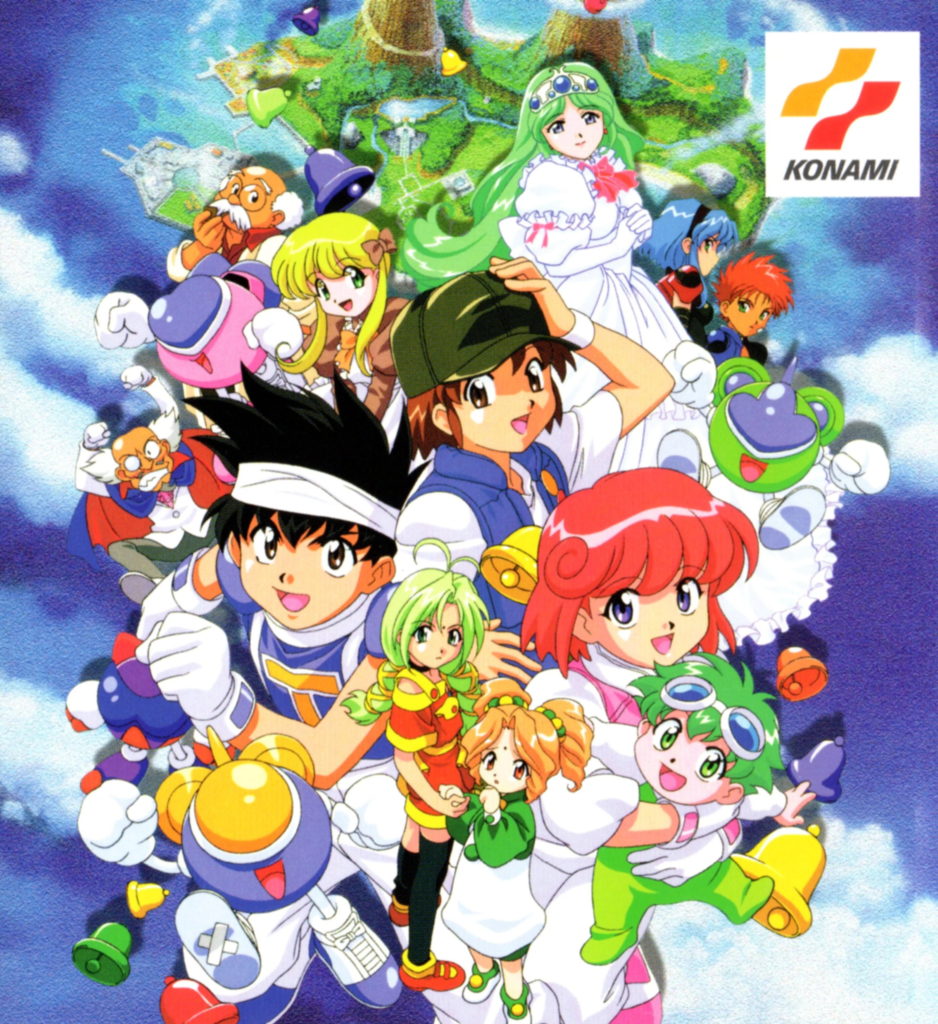
I’m a big fan of the work of Kimimi The Game-Eating She-Monster, who regularly finds the most interesting things to write about. Where she finds the time or energy I really don’t know. Maybe she eats batteries.
Recently she wrote about the obscure Japanese-only PlayStation game TwinBee RPG, coming on the tail end of that series’ anime-infused resurgence. A bit of a synopsis may be in order. Ahem:
TwinBee began as kind of the sibling game of Gradius, and had a similar, if somewhat less prominent, development in the years following its birth. It started as a kind of clone of Namco’s Xevious, which, as Jeremy Parish reminds us, was a lot more popular, and influential, in Japan than it was here.
TwinBee brought a number of advancements over Xevious: fun cartoony graphics, catchy music, two-player simultaneous co-op play, and, a thing that was very new to video games at the time, a powerup system. Not just picking up icons to increase capability either, but a skill-based system that involved juggling Bells with your shots until they changed color. It was a kind of counterpart to Gradius‘ more strategic system, but both games let players pick which abilities they wanted without just letting them jump right to full power.
TwinBee got three sequels on Famicom, including the game’s only official release in the US (other than a couple of Wii Virtual Console releases much later), renamed to Stinger. And all was well, for a little while.
Then, Konami decided that what TwinBee needed was a reboot, long, long before such things became ubiquitous. They restaged the setting to some time after the original games, and introduced teenage cousins Light and Pastel, and the infant Mint, to be the new pilots of the TwinBee ships. They kicked off this period with the arcade game Detana! TwinBee, which ramped all of the things that were special about the original arcade game way, way up.
TwinBee is one of those hidden bits of classic Konami lore that you have to know about to understand why people are fond of that period of the company’s history. It’s a far cry from the modern-day pachinko purveyor. Particularly WinBee pilot Pastel was a very popular character at the time, spawning a mini industry of products devoted to her.
Konami experimented with a number of alternate genres for TwinBee around this time. The best-known of these in the west is probably Rainbow Bell Adventure, a Sonic-style platformer for the Super Famicom/SNES that did see release in Europe, although in a degraded form. RBA is its own kettle of worms that we’ll probably talk about some other time. What matters to us is another of these experiments, and the subject of Kimimi’s article, TwinBee RPG, a self-insert kind of game thing, along the lines of the Game Boy Grandia game, or, on television, Captain N: The Game Master in the US, or Bug tte Honey in Japan.
These are all properties where one or more audience surrogate characters are warped through their television into Video Game World, and have Adventures. Indeed, the isekai style has long been with us. (Can flat-screens can serve as portals to gameworld, or does it have to be CRTs? You should probably check your TV’s settings for portal compatibility.)
Kimimi the Game-Eating She-Monster: TwinBee RPG
For more info, HG101 also did a piece on this game.
Here’s an extra, the first stage music to Detana! TwinBee, in all its amazing catchiness, composed by Michiru Yamane, who also wrote the music for Castlevania: Symphony of the Night:
